




Collapsible content
In this session, we’re going to learn how to play Buddy Hop with the all the SimplyFun Buddies!, This is ahop happy game that’s really two games in one. Play it one way and you’ll help develop memory and sequencing skills. Play it another way and you’ll help build quick visual association skills.
Buddy Hop can be played with 2 to 5 players, ages 4 and up.
Inside every Buddy Hop game box you’ll find thirty character cards, which will give you your hopping orders, and six colorful foam ‘Buddy’ mats to hop on including Digger, Pickles, Beary, Bubbles, [Rooby I think…check back next week] and of course of lovable Tibbar!
The Buddy Hop mats are made for both indoor and outdoor use making a great year round game. In addition, using only visual cues on the cards allows even the youngest player to join in.
Keeping kids active is an important part of building gross motor skills. And the memory components of the game help kids learn to ‘think’ while they ‘move!
To set up for the Memory and Sequencing game, place all six character mats close to each other on the floor in a random pattern.
Shuffle ALL the character cards and place them face down on the table. Choose two cards from the deck, flip them over and place them face up in a line close to the stack.
The player who can hop the highest starts the game!
The first player looks at the two face-up cards on the table and tries to memorize the characters in the order shown. Then, he moves over to the character mats on the floor and tries to step on the mats in the sequence they appeared on the line of cards. Once he begins to step on the mats, he cannot look at the cards on the table again. The other players are responsible for checking the cards and making sure the player stepped on the mats in the right order.
If the player was correct, his turn is over. He comes back to the table, flips over the next card from the stack, displays it at the end of the existing line of cards and play continues with the next player in a clockwise direction.
If the player did not step on the mats in the right sequence, his turn is still over, but he has to take the last card from the line of cards on the table and hold it. He then flips the next card from the stack, places it at the end of the existing line of cards and play continues with the next player.
As the game progresses and the line of cards grows longer, the memory task becomes even more challenging for each player!
The Memory and Sequence game ends when either the line of cards on the table reaches 10 cards OR the stack of cards has run out. Players must then count the number of cards they’ve collected from the missteps on their turns. The player with the FEWEST cards wins!
To set up and play the game for Visual Association, place the 6 character mats at a great distance from each other (don’t be afraid to get creative!) and place a table near the play area. This version is great to play outdoors where you have lots of room to run!
For this game variation, players will have to take many steps to travel from one mat to the next.
Sort the character cards into separate stacks according to the colors on the back of the cards. Each player chooses one stack. Any remaining stacks are returned to the box.
This game is a race!
To play, all players start at the same time and reveal the first cards in their stacks, showing one of six possible characters. Leaving their remaining cards on the table, they run to the mat of the depicted character and place the card there. They quickly return to the table to reveal the next cards in their stacks and deliver them to the appropriate mats. Players will be going in all directions so they need to look out for each other!
The game continues until the first player has delivered all six character cards to their mats. That player is the winner!
Any way you play it, you’ll have a fast-paced, hip-hoppy time with the Simply Fun buddies and Buddy Hop!

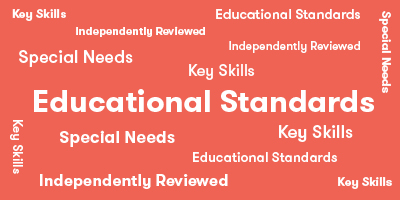
Core Standard*: None

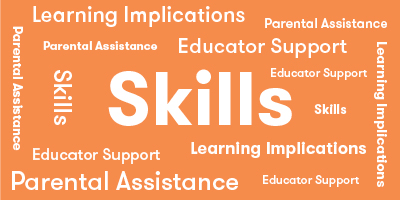
Explore
What Does Child Do To Use Skill In The Game?
Players need to look at the arrangement of the Buddy Hop Character Mats to find the correct ones to walk or run to.
How Parents Can Assist Learning
No special adult support is required
Learning Implications and Educator Support
No special adult support is required
Determine
What Does Child Do To Use Skill In The Game?
Players determine in two different ways playing Buddy Hop. First is to determine the sequence to follow in the Memory Sequencing game. The other is to determine where the Character Mat is located which matches the card they picked up in the Speed Matching game.
How Parents Can Assist Learning
Ask children to state what they did correctly.
Learning Implications and Educator Support
Have a partner watch the sequence of cards on the table and match it to the moves the playing child makes. As children take turns being the "checker" they are also demonstrating understanding of sequence.
Compare
What Does Child Do To Use Skill In The Game?
In Buddy Hop, players need to compare cards they pick up or review with the Characters Mats in order to find the right matches.
How Parents Can Assist Learning
Encourage children to say the sequence of cards aloud, as this will help them remember as they try to replicate the sequence on the Character Mats. Also, ask children to name their sequence of moves to see if they made the moves correctly.
Learning Implications and Educator Support
Children may use color, character or both to compare. Ask they children which is easier for them, and encourage them to focus on that feature of the Cards and Mats. Have a partner watch the sequence of cards on the table and match it to the moves the playing child makes. As children take turns being the "checker" they are also demonstrating understanding of sequence.
Remember
What Does Child Do To Use Skill In The Game?
Memory is the strongest skill developed playing Buddy Hop's Memory Sequencing game as players need to remember and replicate a sequence of cards. And, the sequence increases by each turn until only player successfully repeats the sequence by walking on the Character Mats in the correct order.
How Parents Can Assist Learning
Encourage children to say the sequence of cards aloud, as this will help them remember as they try to replicate the sequence on the Character Mats. Also, ask children to state what they did correctly. Ask children to name their sequence of moves to see if they made the moves correctly.
Learning Implications and Educator Support
Everyone playing the game can practice memory. Have the child who is taking a turn name the cards in sequence. After the child moves through the sequence, while naming the Character Mats they step on, the other players vote on whether it was correct. The teacher or another player checks the card sequence. Encourage children to say the sequence of cards aloud, as this will help them remember as they try to replicate the sequence on the Character Mats
Practice
What Does Child Do To Use Skill In The Game?
In the Memory Sequence game, players practice remembering the card sequence as they review all the cards that are turned face up, including the newest card for that turn. They are also practicing visual matching and gross motor skills.
How Parents Can Assist Learning
When the length of the sequence becomes too challenging, keep the card draw pile to what the child can handle for several turns (ex, 4 cards), then add one more card. This builds confidence with practice before challenging the child with a more difficult level.
Learning Implications and Educator Support
Allow peers to assist a player when the sequence is too challenging. Have them provide a clue, rather than name the animal. For example, "He eats carrots."
Solve
What Does Child Do To Use Skill In The Game?
Players solve the Speed Matching game by being the first player to place their cards on all the Character Mats. They solve the Memory Sequencing game by being the last player to repeat the longest sequence of cards.
How Parents Can Assist Learning
NA
Learning Implications and Educator Support
NA
Review
What Does Child Do To Use Skill In The Game?
In the Memory Sequencing game, players may review their turn if they make a mistake and the other players point it out.
How Parents Can Assist Learning
Encourage the child to say each character's name or the name of the animal as they step on a pad and then repeat the sequence they just recreated.
Learning Implications and Educator Support
Encourage the child to say each character's name or the name of the animal as they step on a pad and then repeat the sequence they just recreated.
Demonstrate
What Does Child Do To Use Skill In The Game?
Players demonstrate their ability to recall the sequence of cards by accurately stepping on the Character Mats in the same order.
How Parents Can Assist Learning
This game is a demonstrating of memory for characters. Ask the child to help out if a player can't remember where to go.
Learning Implications and Educator Support
Allow peers who are good at remembering the card sequence to partner with children who are not as good. Encourage them to follow the child's lead and only assist when needed. Give clues to help the child remember.
*Data compiled from CCSSI ELA Standards, WA Science Standards, and Washington Social Studies Standards

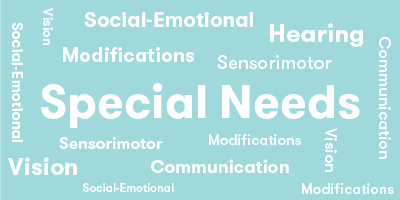
Cognitive
Suggestions for How to Modify Play Experience
Another option would be to make an additional set of tokens with the same words that match the words on the caterpillar. Children can then match these word tokens to the same word on the caterpillar, making this a letter and word matching game.
Children just need to match pictures on the cards to pictures on the pads. This is a good game for children who can match simple pictures. The sequencing task can be limited to two or three cards, if needed, to match the child's ability level.
Some children with cognitive delays may forget the purpose of the game and just run to any pad. Remind children that the colors on the cards match the colors on the pads, so they can find the right pad when they are running to lay down their card.
Communication
Suggestions for How to Modify Play Experience
Encourage children to name the pictures on the cards and where they are going. This will help them remember what they are doing.
In the sequencing game, encourage children to say a number with the card name. For example, 1 bunny; 2 doggie; etc. This will help them remember the sequence and practice naming counting aloud.
Sensorimotor
Suggestions for How to Modify Play Experience
For children with gross motor challenges, the race aspect of Bunny Hop may be too difficult. Let children have a designated runner who runs to the pad where the child points.
To simplify the sensorimotor aspect, modify the sequencing game to one using hands. Place all (or some) of the pads within reach. Let players look at the sequence then slap the pads in order.
Social Emotional/Behavioral
Suggestions for How to Modify Play Experience
Buddy Hop is good for children who need physical movement. Alternate walking and running, if children get too excited in the race game.
Place the pads far distances apart in the race game to prevent aggressive play if children run too close together.
Vision
Suggestions for How to Modify Play Experience
This is not an appropriate game for children with vision problems. Seeing the characters and differentiating them will be too challenging.
Hearing
Suggestions for How to Modify Play Experience
This game does not need modification for children with hearing concerns.
*Data compiled from CCSSI ELA Standards, WA Science Standards, and Washington Social Studies Standards

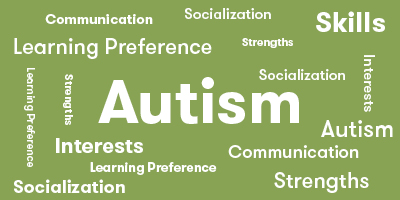
Autism Strengths & Interests
Short Summary of Strengths & Interests
- Has a strong visual memory
- Can remember visual sequences
- Likes to walk, hop and run
Is good at matching visual items
Is This Game Appropriate? Yes
Description
Buddy Hop is an active game that allows children to look at a sequence of cards and then repeat the same sequence on a set of corresponding animal floor pads. A second version of the game involves placing the animal pads around an outdoor area. Children then take a card from their pile, and run and place it on the corresponding animal pad. This game is good for children who have good pictorial memory and a good memory for visual sequences.
Has a good memory for sensory details, including visual, touch, taste and smell
Is This Game Appropriate? Yes
Description
Children who have a good memory for pictures will use that skill playing Buddy Hop. In one version of the game, players match one card at a time to an animal pad on the ground. The other version adds a level of memory by requiring the players to remember a series of images and repeat that series by accurately stepping or hopping on the corresponding animal pads.
Has a good memory for words, phrases and dialouge
Is This Game Appropriate? No
Description
NA
Has a good memory for pictures, numbers and patterns
Is This Game Appropriate? Yes
Description
Buddy Hop is a great game for children who are good at memorizing pictures and colors, especially memorizing sequences of pictures or colors. In one version of the game, players match one card at a time to an animal pad on the ground. The other version adds a level of memory by requiring the players to remember a series of images and repeat that series by accurately stepping or hopping on the corresponding animal pads.
Likes to put things in order or a sequence
Is This Game Appropriate? Yes
Description
Buddy Hop is a great game for children who are good at memorizing sequences of pictures or colors. In one version of play, each round involves adding one more card to a sequence and then trying to repeat the new, longer sequence by stepping or hopping on corresponding animal pads on the ground. Thus, each round gets harder until only one player successfully remembers the longest sequence.
Learns through visualizing or "replaying" actions in their mind
Is This Game Appropriate? Yes
Description
Buddy Hop is a good game for children with autism who learn by visualizing and reflecting on prior actions. As they play, children need to pay attention to the sequences made by other players. Then, on their turn, they will add a card to the existing sequence, try to remember the new sequence, and then replay this sequence as they try to step or hop on the correct animal pads on the ground without looking at the cards.
Likes activities with rules, such as math and phonics
Is This Game Appropriate? No
Description
NA
Is very concrete and literal
Is This Game Appropriate? Yes
Description
Many children with autism prefer activities that are literal and concrete. The physical action in Buddy Hop will appeal to these children as they pick up a card or remember a sequence of cards and then walk, run or hop to the correct animal pads on the ground. This one to one correspondence of image on card to image on pads is very literal.
Learns in small "chunks" (for example, phone numbers are 3 chunks of number xxx-xxx-xxxx that are combined together)
Is This Game Appropriate? No
Description
NA
Is good at matching visual items
Is This Game Appropriate? No
Description
NA
Likes spatial problem solving
Is This Game Appropriate? Yes
Description
Because the Buddy Hop animal pads are spread out on the ground, players need to use their visual scanning and spatial reasoning skills to find the pads they need to step or hop on. For children with good spatial reasoning skills, they can use those skills in a unique and fun way by using their whole body to discover and move to the right locations.
Can read well with good vocabulary, though may not fully comprehend content
Is This Game Appropriate? No
Description
NA
Likes to use and has good fine motor skill
This game is not appropriate
Likes established routines or set ways of doing things
This game is not appropriate
Likes manipulating, constructing or building things
Is This Game Appropriate? No
Description
NA
Likes to use and has good musical abilities
Is This Game Appropriate? No
Description
NA
Likes to use and has good drawing
Is This Game Appropriate? No
Description
NA
Autism Special Considerations
Appears to ignore other's communication and/or has difficulty giving eye contact to a communication partner
Is This Game Appropriate for Child with Characteristic? Yes
Can Child with Characteristic Play Game w/o Modification? Yes
Strategies for Developing Compensatory Skills:
Buddy Hop does not require eye contact with other players. This is a good game for children with autism who can match and/or sequence and like to move.
Has difficulty understanding complex verbal directions
Is This Game Appropriate for Child with Characteristic? Yes
Can Child with Characteristic Play Game w/o Modification? Yes
Strategies for Developing Compensatory Skills:
The directions are simple but some children may need physical assistance to understand the sequencing version of the game. If needed the adult can help the child learn how to sequence by holding up the next card in the sequence and shouting out, "First, step on Tibbar's the bunny. Next, step on Ruby the kangaroo," and so on.. Once the child understands the relationship of the card sequence to the movement sequence, the adult can eliminate the prompts. The game can also be played with a limited number of cards for the sequencing version until the child learns the rules.
Uses vocabulary inaccurately or demonstrates echolalia (repeating another's speech)
Is This Game Appropriate for Child with Characteristic? Yes
Can Child with Characteristic Play Game w/o Modification? Yes
Strategies for Developing Compensatory Skills:
Echolalia should not be an issue with this game, unless the child persists in repeating the one animal's name. For example, if the child turns over Tibbar's, Digger, and Ruby and keeps repeating," Tibbar's, Tibbar's, Tibbar's," this may confuse his movement sequence. If this is the case, another player can name animals in the sequence for the child to repeat. "For example, Tibbar's, Digger, Ruby."
Gets stuck repeating a verbal topic or physical actions and/or has difficulty attending to others' actions or topic.
Is This Game Appropriate for Child with Characteristic? Yes
Can Child with Characteristic Play Game w/o Modification? Yes
Strategies for Developing Compensatory Skills:
One version of the game is a race, so no attention to others' play is needed until the end. For the other version of the game, players need to watch and check whether the other players' sequences are followed correctly. The child with autism can benefit by being the "shadow" for different players. The child can follow each player and announce what animal the person steps on, so another player can check the sequence. This enables the child with autism to relate to each player, but without having to directly talk to them.
Has difficulty producing speech/communication
Is This Game Appropriate for Child with Characteristic? Yes
Can Child with Characteristic Play Game w/o Modification? Yes
Strategies for Developing Compensatory Skills:
Neither version of Buddy Hop requires children to communicate, but stating of the names of the animals may help them remember the correct sequence. Children with autism are often visual learners, so Buddy Hop may work to their advantage, even without speech.
Has difficulty sequencing multi-step actions and/or doing complex abstract tasks
Is This Game Appropriate for Child with Characteristic? Yes
Can Child with Characteristic Play Game w/o Modification? Yes
Strategies for Developing Compensatory Skills:
The game is very concrete, but requires lengthy picture memory sequences as the game goes on. If this is too frustrating for the child, set a limit on the number of cards turned over in each round, or give the child visual cues (ex: hop like a bunny, dig like the dog) when a card is turned over. This strategy has the added advantage of encouraging the child to look at the player who is demonstrating.
Demonstrates difficulty initiating and maintaining social interactions
Is This Game Appropriate for Child with Characteristic? Yes
Can Child with Characteristic Play Game w/o Modification? Yes
Strategies for Developing Compensatory Skills:
Social interaction is not needed, as players operate individually. Cooperation can be encouraged, however, if players support each other through dramatizing the next animal in the series (ex: hopping like a bunny) or giving a clue about the next animal (e.g. "He oinks").
Acts out or demonstrates avoidance behaviors when frustrated, overwhelmed, or needs more sensory input.
Is This Game Appropriate for Child with Characteristic? Yes
Can Child with Characteristic Play Game w/o Modification? Yes
Strategies for Developing Compensatory Skills:
Children with autism may get caught up in the movement aspect of the game and forget the intent of each turn. Remind the child when needed with a verbal or visual cue (e.g., point to or say the name of the pad they are running to, for instance.)
Has short attention span for non-preferred activities
Is This Game Appropriate for Child with Characteristic? Yes
Can Child with Characteristic Play Game w/o Modification? Yes
Strategies for Developing Compensatory Skills:
If the child likes movement, this should be a preferred game. If movement is not a preference, the game can be modified to be a verbal game. The child can look at the sequence of cards, turn around or close their eyes, and name the animals in sequence. Alternatively, use two of the colored sets of cards. Turn over the cards of one set with increasing numbers, as in the directions. Cover the cards that are turned over and use the second set to let players lay out the cards in the same order as the covered set. Unveil the covered set to see if the player is correct.
Needs sameness or consistent routines and/or has difficulty with transitions from one activity to another
Is This Game Appropriate for Child with Characteristic? Yes
Can Child with Characteristic Play Game w/o Modification? Yes
Strategies for Developing Compensatory Skills:
The child with autism may have difficulty playing one version of the game and then shifting to the other version of the game. To maintain consistency, play only one version on a specific day. Introduce the other version as a different game on another day. Once children can comfortably play both versions, let them choose which to play.
Has difficulty understanding others' feelings, intentions, and the reasons for others' actions.
Is This Game Appropriate for Child with Characteristic? Yes
Can Child with Characteristic Play Game w/o Modification? Yes
Strategies for Developing Compensatory Skills:
Understanding others thoughts and feelings is not needed for this game.
*Data compiled from CCSSI ELA Standards, WA Science Standards, and Washington Social Studies Standards

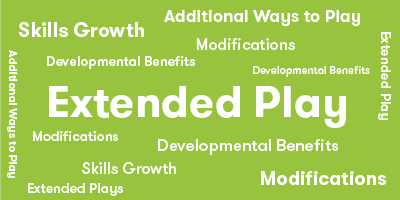
Extra Ways to Play the Game
Set out a sequence of cards face up on the table. Give each player a card matching one in the sequencing set on the table, with the exception of one player who is the "Fixer" for the round. The Fixer studies the series of cards on the table, while the rest of the players mix themselves up and then stand in a row holding up their card. The Fixer has to rearrange the people to match the right sequence of cards. The Fixer earns one point for each card (person holding card) in the right sequence. Play 10 rounds. The one with the most points at the end wins. Rotate who is the Fixer in each round
Materials Needed
No extra materials needed.
Developmental Benefits
This variation of the game adds the element of moving people around, which is a fun way to re-sequence the cards. Re-sequencing requires children to remember the correct sequence, but re-order it. This is more difficult than just straight forward sequencing, as the visuals of the new sequence causes a distraction to the memory.
Extra Ways to Play the Game
Another modification of Buddy Hop is to make it a matching game. On a turn one player is the Mixer and arranges the cards on the mats, but not on matching mats. The next player, the Fixer, then races to see how fast they can move the cards back to the matching mats. Players count to record the time. "One Tibbar, Two Tibbar, etc." and write down the seconds it took. This player then becomes the Mixer. Play proceeds with each player having a turn to be both the Mixer and the Fixer. The player with the fastest time wins the round. The placement of the mats can be changed after each round to move them further apart.
Materials Needed
No materials needed.
Developmental Benefits
Children practice quick visual matching, visual motor skills, and counting. They also learn to judge how long a second in time takes, and how long action sequences take to be performed.
Extra Ways to Play the Game
Play Buddy Hop with just the cards. One player is the dealer. The other players each have a set of the sequencing cards. The dealer decides how many cards to lay out. S/he lays down a card sequence of from one to six cards, counts slowly to ten, then turns the cards back over (in the same sequence). Other players then try to lay out the cards from their pack in the same sequence. The person with the most correct wins the round. The next person to the right then becomes the dealer.
Materials Needed
No materials needed.
Developmental Benefits
Each player must make a decision about how challenging to make their deal of the sequence. Players will learn that the longer the sequence, the less get right. Also, they will start to practice memory strategies to help them remember.
Extra Ways to Play the Game
Play Buddy hop in reverse. Lay out the Character Mats two to seven steps apart. Have the children walk down the path naming the animals, then go to the table and try to lay out the cards in the same order without looking at the mats.
Materials Needed
No materials needed.
Developmental Benefits
The benefit of this approach is that physical movement, i.e. walking over the animal mats, combined with visualization enhances memory.
Extra Ways to Play the Game
A fun modification of Buddy Hop is to place 3-7 of the Character Mats (depending on the number of players) in a circle. Have one fewer of the mats than players. Have a player stand on each pad. Each announces the name of their animal, then sits on the mat. The extra child, the Caller, draws a card and guesses who is sitting on that animal. If correct, s/he keeps the card. Everyone moves to a new pad for the next round, with the player to the right of the Caller becoming the new Caller. Increase the difficulty by drawing more than one card.
Materials Needed
No materials needed.
Developmental Benefits
This memory game is a little less challenging, as the child only has to remember one element of a sequence. This is a good way to begin learning how to remember sequences for young children.
*Data compiled from CCSSI ELA Standards, WA Science Standards, and Washington Social Studies Standards
Game Details
- 6 Foam Character Mats
- 30 Character Cards
- 1 Rules Booklet
- Choosing a selection results in a full page refresh.
- Opens in a new window.







